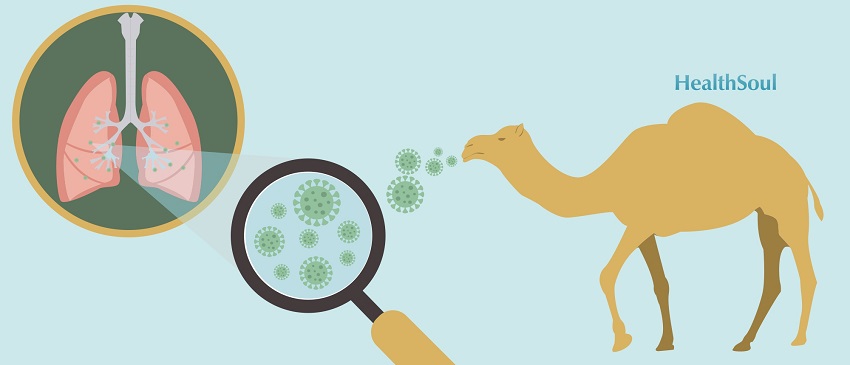Middle East Respiratory Syndrome: Everything You Need to Know

With the COVID-19 pandemic overwhelming the world, attention is turning toward the subject of lethal zoonotic diseases—particularly those that have affected the world in the past two decades.
Of those, there have been three severe and exceptionally lethal zoonotic diseases caused by novel coronaviruses including severe acute respiratory syndrome (SARS) in 2002, Middle East Respiratory Syndrome (MERS) in 2012, and of course, the most recent pandemic, COVID-19 which is thought to have originated in 2019.
All three of these lethal zoonotic diseases caused by novel coronaviruses have zeroed in the attention of global public health and are listed in the WHO Blueprint List for priority pathogens because of their absence for effective treatment, pandemic potential, and a threat to global health security.
While we’re currently unsure of how to treat COVID-19, SARS-CoV-2 was effectively contained within a year of emerging. But what about MERS-CoV?
Middle East Respiratory Syndrome continues to circulate and cause human disease with intermittent but severe cases in the Middle East—and that risk of spreading globally continues to weigh heavily on medical minds.
What is the Middle East Respiratory Syndrome Coronavirus?
The Middle East Respiratory Syndrome Coronavirus (often called the MERS-CoV) is a lethal zoonotic pathogen that first surfaced and was identified in humans in 2012 in both Saudi Arabia and Jordan.
MERS-Cov, just like SARS-CoV and SARS-CoV-2 are members of the coronaviridaefamily. While other human coronaviruses will generally cause mild respiratory infections, these strains can cause highly lethal diseases in humans.
Between April 2012 when it was first identified and December of 2019, nearly 2,500 lab-confirmed cases of MERS-CoV continued to occur. Of this number, 858 deaths were reported from 27 countries to WHO ( a 34.3 percent mortality rate), most of which were from Saudi Arabia (with a total of 2,106 cases and 780 deaths).
While this lethal zoonotic disease caused by a novel coronavirus demonstrates sporadic cases, community clusters, and nosocomial outbreaks, there have been large outbreaks of human-to-human transmission—the largest of which occurred in Riyadh and Jeddah in 2014 and in South Korea in 2015.
The initial origin of primary human MERS-CoV infections remains to be known, but it is known that dromedary camels are a host reservoir for this species, and that humans can acquire the MERS-CoV strain through direct or indirect contact with an infected camel or an infected patient.

WHAT MAKES MIDDLE EAST RESPIRATORY SYNDROME CORONAVIRUS SO DANGEROUS?
While the high mortality rate and epidemic potential both cause mounting concern, the real danger behind the Middle East Respiratory Syndrome Coronavirus is that there are no medical countermeasures that exist at this time.
Further, it is impossible to estimate the incubation period in primary cases, however, based on data from cases of human-to-human transmission, it’s estimated that the incubation period has a media on 5-7 days with a range of 2-14 days.
Unfortunately, given that MERS-CoV continues to be highly endemic among dromedary camels from widespread geographical areas like Africa, the Middle East, and more, the transmission with risk to human epidemics will undoubtedly continue for years to come.


